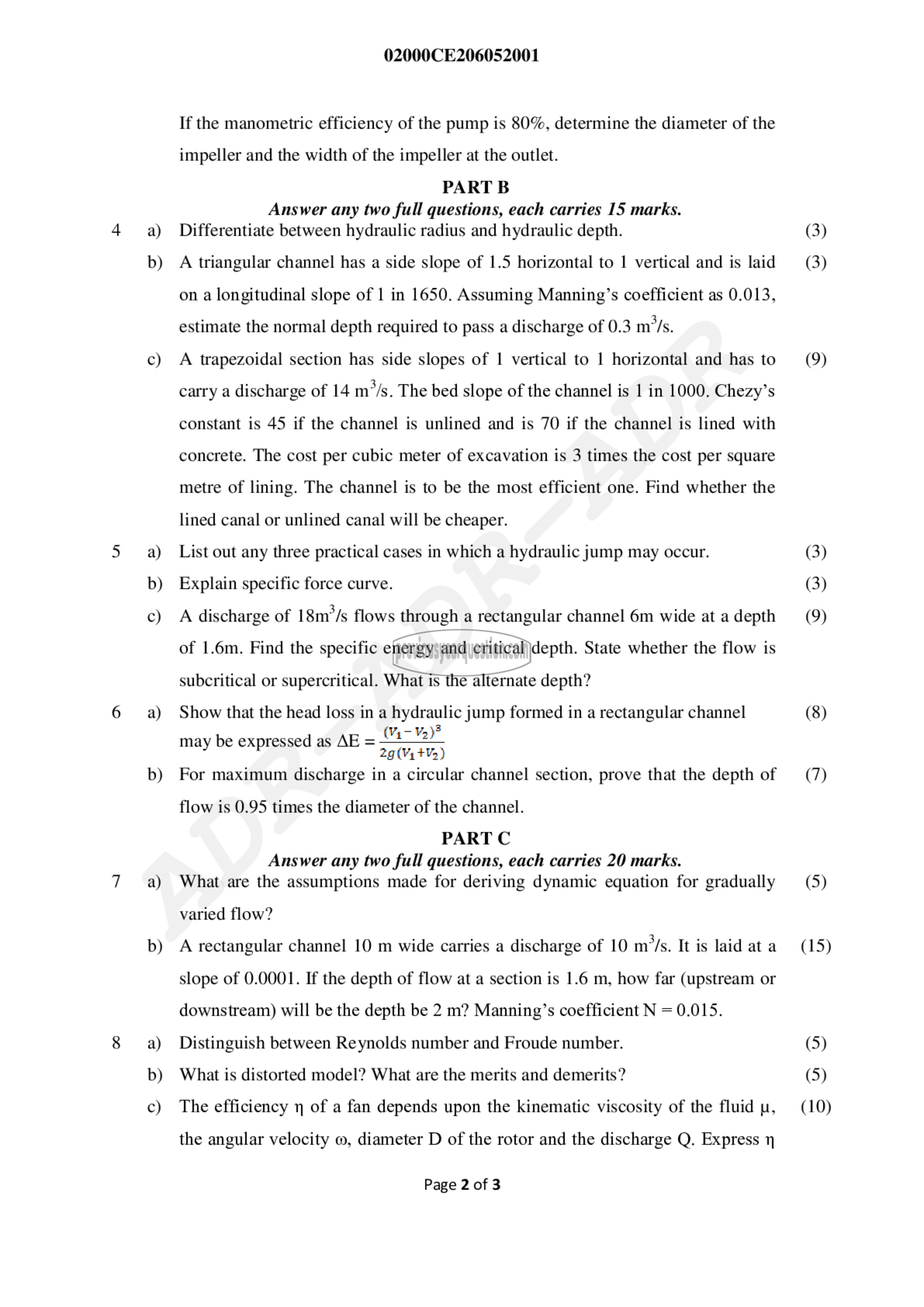APJ ABDUL KALAM TECHNOLOGICAL UNIVERSITY Previous Years Question Paper & Answer
Semester : SEMESTER 4
Subject : Fluid Mechanics- II
Year : 2020
Term : SEPTEMBER
Branch : CIVIL ENGINEERING
Scheme : 2015 Full Time
Course Code : CE 206
Page:2
a)
b)
௦)
a)
b)
௦)
a)
b)
a)
b)
a)
b)
0)
02000CE206052001
If the manometric efficiency of the pump is 80%, determine the diameter of the
impeller and the width of the impeller at the outlet.
PART B
Answer any two full questions, each carries 15 marks.
Differentiate between hydraulic radius and hydraulic depth.
A triangular channel has a side slope of 1.5 horizontal to 1 vertical and is laid
on a longitudinal slope of 1 in 1650. Assuming Manning’s coefficient as 0.013,
estimate the normal depth required to pass a discharge of 0.3 2/5.
A trapezoidal section has side slopes of 1 vertical to 1 horizontal and has to
carry a discharge of 14 m*/s. The bed slope of the channel is 1 in 1000, Chezy’s
constant is 45 if the channel is unlined and is 70 if the channel is lined with
concrete. The cost per cubic meter of excavation is 3 times the cost per square
metre of lining. The channel is to be the most efficient one. Find whether the
lined canal or unlined canal will be cheaper.
List out any three practical cases in which a hydraulic jump may occur.
Explain specific force curve.
A discharge of 18m°/s flows through a rectangular channel 6m wide at a depth
of 1.6m. Find the specific energy and critical depth. State whether the flow is
subcritical or supercritical. What is the alternate depth?
Show that the head loss in a hydraulic jump formed in a rectangular channel
നന്
29௫715)
For maximum discharge in a circular channel section, prove that the depth of
may be expressed as AE =
flow is 0.95 times the diameter of the channel.
PART C
Answer any two full questions, each carries 20 marks.
What are the assumptions made for deriving dynamic equation for gradually
varied flow?
A rectangular channel 10 m wide carries a discharge of 10 m’/s. It is laid at a
slope of 0.0001. If the depth of flow at a section is 1.6 m, how far (upstream or
downstream) will be the depth be 2 m? Manning’s coefficient N = 0.015.
Distinguish between Reynolds number and Froude number.
What is distorted model? What are the merits and demerits?
The efficiency ர of a fan depends upon the kinematic viscosity of the fluid யூ,
the angular velocity ©, diameter D of the rotor and the discharge Q. Express 1
Page 2 of 3
(3)
(3)
(9)
(3)
(3)
(9)
(8)
(7)
(5)
(15)
(5)
(5)
(10)
